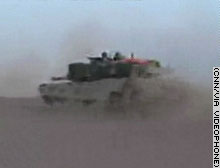| Today is Custer Day. Get haircut. |
. . . prompting him to exclaim, "Where'd all these damned Indians come from?"
 . . . Within roughly three hours, Custer's force was completely annihilated. Only two men from the 7th Cavalry later claimed to have seen Custer engage the Indiansa young Crow whose name translated as Curley, and a trooper named Peter Thompson, who had fallen behind Custer's column, and most accounts of the last moments of Custer's forces are conjecture. Lakota accounts assert that Crazy Horse personally led one of the large groups of Lakota who overwhelmed the cavalrymen. While exact numbers are difficult to determine, it is commonly estimated that the Northern Cheyenne and Lakota outnumbered the 7th Cavalry by approximately 3:1, a ratio which was extended to 5:1 during the fragmented parts of the battle. In addition, some of the Indians were armed with repeating Spencer and Winchester rifles, while the 7th Cavalry carried single-shot Springfield carbines, which had a slow rate of fire, tended to jam when overheated, and were impossible to reload on horseback. The opposing warriors carried a large variety of weapons, from bows and arrows to Henry rifles.
. . . Within roughly three hours, Custer's force was completely annihilated. Only two men from the 7th Cavalry later claimed to have seen Custer engage the Indiansa young Crow whose name translated as Curley, and a trooper named Peter Thompson, who had fallen behind Custer's column, and most accounts of the last moments of Custer's forces are conjecture. Lakota accounts assert that Crazy Horse personally led one of the large groups of Lakota who overwhelmed the cavalrymen. While exact numbers are difficult to determine, it is commonly estimated that the Northern Cheyenne and Lakota outnumbered the 7th Cavalry by approximately 3:1, a ratio which was extended to 5:1 during the fragmented parts of the battle. In addition, some of the Indians were armed with repeating Spencer and Winchester rifles, while the 7th Cavalry carried single-shot Springfield carbines, which had a slow rate of fire, tended to jam when overheated, and were impossible to reload on horseback. The opposing warriors carried a large variety of weapons, from bows and arrows to Henry rifles.The terrain of the battlefield gave Lakota and Cheyenne bows an advantage, since Custer's troops were pinned in a depression on higher ground from which they could not use direct fire at the Indians in defilade. On the other hand, the Lakota and Cheyenne were able to shoot their arrows into the depression by launching them on a high arching indirect fire, with the volume of arrows ensuring severe casualties. U.S. small arms might have been more accurate over open distances, but the fighting on this occasion was close combat where rate of fire and reliability of a weapon were more important attributes.



